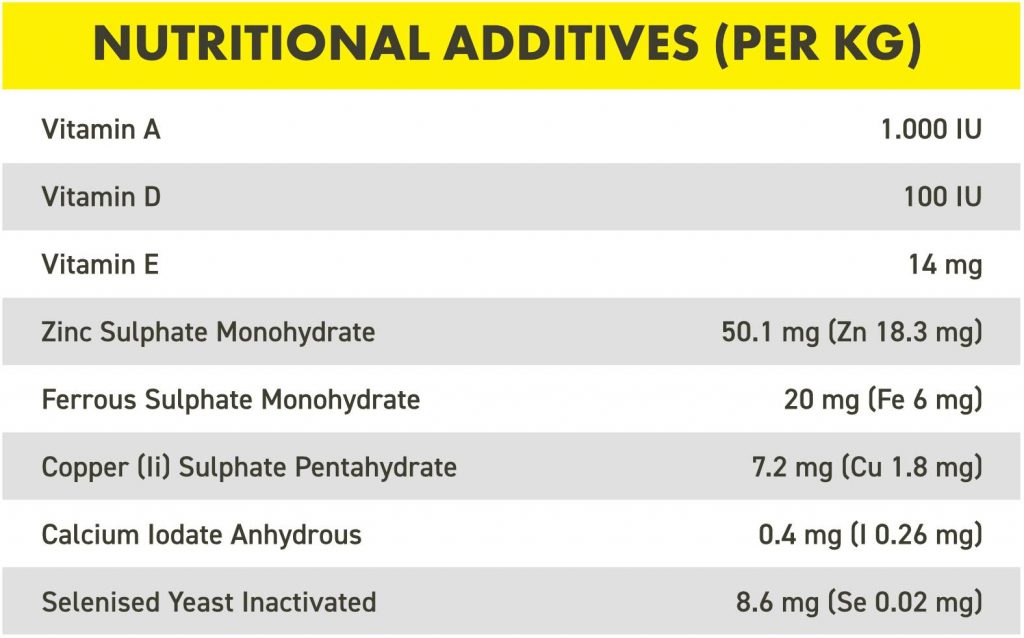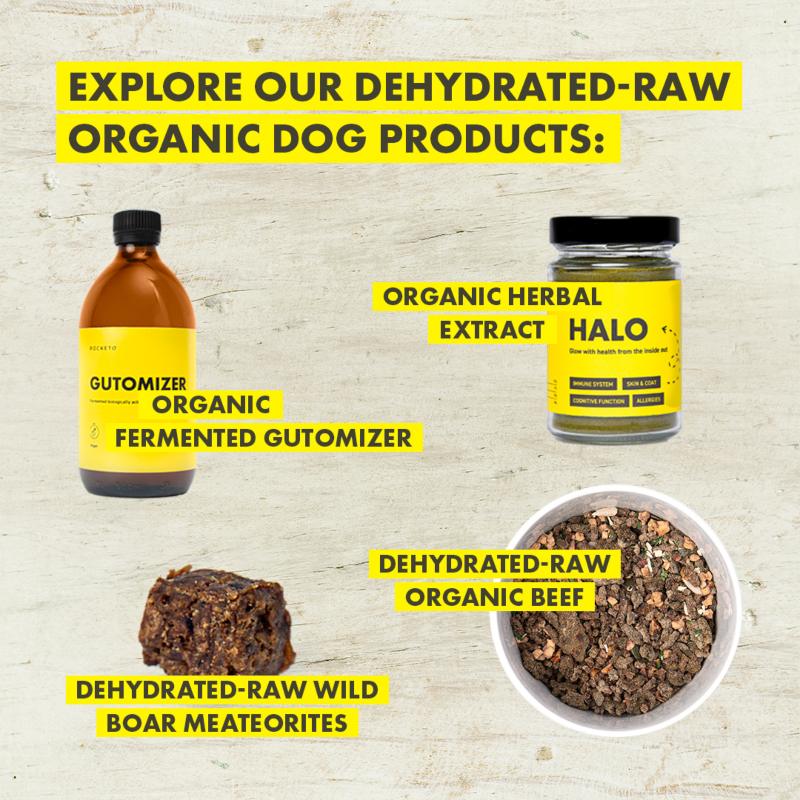20% OFF FIRST 2 SUBSCRIPTION ORDERS
FREE DELIVERY ON ORDERS £40+
TRY ROCKETO RISK-FREE - MORE DETAILS HERE
In this blog, we will look at what ‘bioavailability’ means, and why this is important for you and your dog.
Let’s check google for the definition: the proportion of a drug or other substance which enters the circulation when introduced into the body and so is able to have an active effect”. Source: Oxford Languages
The above definition relates to pharmacology, but let us re-word this, so It applies to food: “the proportion of a nutrient which is metabolized by the body to have an active effect”.
You will see the term ‘bioavailability’ a lot within adverts for the pharmaceutical and whole food supplement world, because when it comes to the ingredients used in “formulas” bioavailability is important, and it can make all the difference to consumers, depending on their goals and even medical requirements.
Let’s dig a little deeper.
Vitamin C occurs naturally in fruits, herbs, and vegetables, however, in 1933 two scientists called Svirbely and Szent-Györgyi found a way to synthesize it (i.e. produce it in a lab) and called it “hexuronic acid. After further studies, they were able to treat guinea pigs with scurvy, so they decided to rename their creation Ascorbic (Anti-Scorbutic) Acid.
Since then, the world of science has moved on, and countless studies have been done on the bioavailability of synthetic ascorbic acid versus the natural occurring ascorbic acid found in fruits and vegetables. Interestingly, they have shown that natural sources were 35% more bioavailable (Vinson et al. 1989) and stayed in the body longer (Uchida et al., 2011).
It’s also interesting that the studies suggest that it is beneficial to use a natural ascorbic acid when it comes to supplementation, because whole foods carry a lot of other nutrients that also have biosynthetic/metabolic function compounds and support the uptake of vitamin C too. (Carr, Vissers, 2013) For example, vitamin C can chelate (bind) to zinc, which has been shown to support the immune system (Maggini S, Et al., 2012). In the synthetic form this would be the supplement known as “Zinc Ascorbate”.
The biggest cause of depletion of/failure to synthesize vitamin C is stress or sickness, both of which increase the levels of cortisol (stress hormone) and will deplete vitamin C very quickly. This is because the adrenal glands use vitamin C to produce cortisol (Hooper, M. H et al. 2019), the cortisol then increases glucose in the bloodstream (Kamba et al., 2016) which the dog can’t then use to synthesize vitamin C. This is the body’s way to feed the brain and keep dogs (and humans) alert/safe, part of the amygdala’s freeze, flight, fight or fawn response.
By now you’re probably wondering how this affects Pet Foods?
We’ll explain.
Just like the pharmaceutical and whole food supplement industry, the pet food industry is no exception to using “bioavailability” as a unique selling point, because nearly all the commercial pet foods are fortified with synthetic and whole food supplements.
Still using vitamin C as an example, this was not deemed an essential nutrient by the National Research Council (NRC) in their “Nutrient Requirements of Dogs and Cats 2006”, because dogs can synthesize their own from glucose in their liver (not very well, but the ability is there). This is why pet food manufacturers are not duty-bound to add this into their products, so it’s always beneficial to add a dietary source of vitamin C via fresh fruits, vegetables, or herbs, especially if a dog is fed processed food, such as kibble.
That being said, Some pet food manufacturers do add in vitamin C as a unique selling point to promote health, but it’s synthetic and isn’t as bioavailable as natural sources such as Parsley. This is NOT the case with Rocketo — we only use natural sources for all vitamins and minerals required.
Challenge: The next time you get your pets’ food, check the labeling.
If any synthetic vitamins or minerals are used, they are typically displayed on pet food labels under “Additives”- like the following example (Note: No vitamin C/L-ascorbic acid):

There are alternative forms of synthetic vitamins and minerals, and each has their own bioavailable yield/long-term side effects.
Take zinc for example. This manufacturer has Zinc Sulphate Monohydrate added in, but there’s also zinc picolinate, zinc citrate, zinc acetate, zinc glycerate, and zinc monomethionine.
Interesting right?
By this point, you’re more than likely thinking “why do they add synthetics into pet foods? ” Simply put, this is all to do with food processing and the effects on Bioavailability, this is why bioavailability is a marketing buzzword when it comes to pet foods/supplements.
The manufacturing process of pet foods differs from one brand to the next, however, they usually still use the same basic synthetic premix, and the ingredients are subjected to various levels and types of processing such as extruding (Paridhi, Et al. 2020) which is a big factor of making kibble. Some manufactures will use a tailored premix after an initial lab analysis of their foods, but they are still synthetic additions.
The national research council is well aware that food processing can reduce or even eliminate nutrients depending on the methods used. This is why manufacturers have to “fortify” with synthetics to ensure that the foods meet the requirements set by FEDIAF(European Pet Food Industry Federation) the guidelines can be found here: https://fediaf.org/images/FEDIAF_Nutritional_Guidelines_2020_20200917.pdf
FEDIAF have reviewed and adapted/updated the NRC’s Nutrient Requirements of Dogs and Cats to ensure they are relevant to the latest scientific research.
It’s important to acknowledge that the FEDIAF doesn’t recommend foods, only nutrients — this is why the synthetic nutrients are important for them. If they didn’t use them they wouldn’t hit the requirements due to the processing methods and quality of the initial whole food ingredients used, failure to meet the requirements means they can’t sell their product commercially or via prescription.
With the help from the pharmaceutical industry under veterinary guidance, synthetic premixes have been formulated and passed feeding trials. Due to this, the foods are laced with synthetics for supposed nutritional adequacy and preservation.
In 2020 the team at DogRisk based at the University of Helsinki (Anturaniemi(o.s Roine), Et Al. 2020) conducted a study on 33 Staffordshire Bull Terriers. The effect of a raw vs dry diet on serum biochemical, hematologic, blood iron, B12, and folate levels in Staffordshire Bull Terriers”.
This was a study to show how diet affects blood serum, They had two feeding methods they wanted to compare which were; “heat‐processed high carbohydrate” such as kibble and “non-processed high‐fat” such as fresh foods. In their findings, it simply shows that fresh foods are far superior when it comes to bioavailability/metabolic pathways therefore feeding a kibble diet for example for a long period of time could compromise health and longevity.
All the ingredients in Rocketo are 100% natural, from whole foods and herbs. We do not include any synthetic vitamins or minerals, and all are dehydrated very gently to ensure they retain their nutritional profiles. This means that all the nutrients are very bioavailable — just like nature intended!

References
Get up to dog things